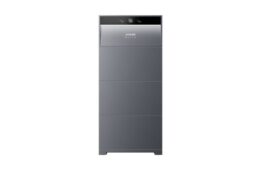Utility-scale solar developer Pine Gate Renewables has signed an MOU for 4,500 MWh of rechargeable zinc-alkaline batteries from Urban Electric Power for the next five years. This agreement allows Pine Gate access to Urban Electric Power batteries each year, under preferential terms.
 “We’re excited to partner with Urban Electric Power to bring zinc-alkaline batteries, a familiar household item, and apply it toward grid-connected utility scale applications for our customers across the United States,” said Raafe Khan, Director of Energy Storage at Pine Gate Renewables. “We are committed to supporting our partners and customers with safe, domestically manufactured, scalable, reliable, and durable solutions that they can connect with for their storage needs. This is just the start of an exciting journey ahead for both organizations and we look forward to working with the Urban Electric Power team in building a sustainable energy storage ecosystem so that our customers can live their lives uninterrupted.”
“We’re excited to partner with Urban Electric Power to bring zinc-alkaline batteries, a familiar household item, and apply it toward grid-connected utility scale applications for our customers across the United States,” said Raafe Khan, Director of Energy Storage at Pine Gate Renewables. “We are committed to supporting our partners and customers with safe, domestically manufactured, scalable, reliable, and durable solutions that they can connect with for their storage needs. This is just the start of an exciting journey ahead for both organizations and we look forward to working with the Urban Electric Power team in building a sustainable energy storage ecosystem so that our customers can live their lives uninterrupted.”
Urban Electric Power’s patented technology tweaks the chemistry of the familiar household AA battery to make it rechargeable. This enables safer, more affordable energy storage solutions, which the New York-based company offers under the Ohm label to residential and commercial applications, and under the Zeus label for utility-scale. The batteries are assembled at its factory in Pearl River, New York.
Under development since 2012 by researchers at City College of New York, the rechargeable zinc-alkaline technology has already been tested and proven for large-scale uses such as in the San Diego Supercomputer Center, and at commercial-industrial locations to offer backup power and dispatchable energy storage to the power grid.
“As we phase out fossil fuels and add distributed renewables, demand will only grow for replacing old battery technology with cost-effective energy storage that is safer, longer-lasting, and more environmentally friendly,” said Ann Marie Augustus, Urban Electric Power’s Vice President of Operations. “We offer non-toxic, utility-scale battery energy storage with no thermal runaway fire risk, at a cost and environmental footprint less than standard lithium-ion or lead batteries.”
News item from UEP





This is a “path forward” in bringing massive ESS to utility electricity storage and regulation now and in the future. We have witnessed how geopolitical “forces” can affect supply chains around the World. Zinc-alkaline batteries for energy storage can become a boon to energy storage from smaller residential energy storage (OHM) to large scale ESS projects (ZEUS), like the proposed Elkhorn project in Monterey, CA that is supposed to be built out to 1,500MW/6,000MWh by about 2025 or 2026. The commodity price of nickel, lithium, cobalt has increased, and some battery manufacturers are paying something like $80,000 per refined ton for nickel and up to $50,000 per refined ton for lithium and around $50K to maybe $80K a ton for refined Cobalt. Finding cheaper more abundant elemental materials firms up the supply chain and allows for cheaper much less price volatility for these commodity materials. Let’s NOT repeat history and replace OPEC with LiPEC. This ZnMnO2 chemistry can change the “balance” of power in the World of elements used to make ESS battery cells. UEP ‘hints’ in some of their claims as these batteries cycling for (thousands of cycles). But I have found (no) specifics as to what that means. One can design a sealed lead/acid battery system when used to a maximum of 50% DoD with full recharge (each day) and proper temperature range can get an off-grid system that the battery will last (20) years. DEKA 2VDC sealed batteries. I could find nothing on exact cycling and limitations on these units but did find some pretty good specifications on temperature -20 degrees C to 60 degrees C and claims of no possibility of thermal runaway. (YET) in their utility scale systems they are showing temperature, (H2) detectors and smoke detectors. A couple of charts suggest the gravimetric energy density of Zn rechargeable batteries is from 60Wh/kg up to 120Wh/kg. The bottom line with this type of system is depth of discharge, speed and efficiency of recharge and the “sweet spot” of how deep of a discharge, how important is it to fully recharge the battery every day and “can” one discharge this system down to say 5% DoD repeatedly and up to 90% to 100% charge each day and get “several thousand” cycles over the design life of the ESS? IF UEP really wants to sell their product, they are going to have to pony up these specific battery design specifications to grab customers away from the established (LFP) chemistry.